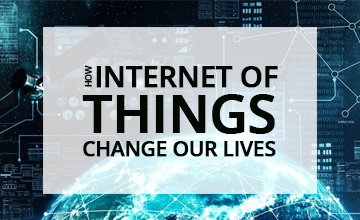
Despite being an overtly and blatantly physical world, the sports industry has never shied away from digitising portions of their world that allow them to maximise their performance. The sports industry have been one of the few areas where human capabilities and digital support has worked together to achieve a state where Internet of Things (IoT) is helping humans getting physically better at their job.
The need of IoT in sports stems from the needs of sportspersons to remain in their best possible shape — physically and mentally — at every given point of time. The development and health of a sportsperson is essential to their overall success, and IoT devices are now helping their coaches and managers to build systems that to avoid injuries in order to reach their full potential.
The core use of IoT in sports is in the form of devices that allow a deeper analysis of the game and the performance of a sportsperson. IoT has allowed the development of sensors that capture and record data regarding the performance of sportsperson. This allows them and their coaches to gather metrics that analyse the performance and efficiency, while highlighting the areas that need extreme attention for improvement. The ambit of IoT has developed to a point where it can also be used to monitor the health of sportspersons with special emphasis on their muscles — monitoring which of them are overworked and turn out to be a potential weakness.
The potential of IoT in sports is limitless, and with its journey still in the initial stage there remain endless possibilities.
Player and Game Development
IoT holds the potential to change the ways in which games are played by facilitating training, manage player performance and address key elements of the game. The implementation of IoT in sports allows coaches and managers to combine the power of advanced analytics and game video. This would mean that coaches can process extensive data to obtain metrics with regard to efficiency and performance of a player along with points of opponent weakness in their attempt to build a better in-game strategy for matches.
A majority of the analysis of athletic performances and training schedules is largely done manually in the present world, with limited support from apps or specific software systems. But the revolutionising impact that IoT in sports promises is the sheer amount of data that it can collect and collate. Experts are working on building the technology that can transform sports equipment into IoT devices — such as in-fabric sensors, smart insoles, smart helmets, smart bats, and so forth. IoT in sports can be implemented in a number of ways and enhance the focus on in-game performances and strategies to a level that is yet to be explored.
Smart Stadiums and Fan Engagement
IoT in sports will not remain restricted to helping athletes, players, their coaches. The implications of IoT in sports will also be used to ensure that the experience of watching sports is enhanced. Fans are also touted to benefit from IoT in sports, with some implications already taking shape in the real world. Multiple LED screens of humongous proportions are already a truth in most stadiums across different sports around the world — and so is the availability of WiFi connections.
Further use of IoT in sports will help in better maintenance of stadiums. Sensors around stadiums can monitor the stadium’s condition continuously enabling preventive maintenances. IoT can also be used in parking spaces to enable fans to find empty parking spots with more ease. Further, IoT can be used to provide traffic updates before and after a game, while also allowing the stadiums to build mechanisms to better handle traffic congestions.
Sports all over the world are witnessing a gradual decrease in the number of fans that actually come to stadiums to watch a game. Improving the experience for fans will also ensure that sports continue to receive the adulation that it requires to succeed. This would require a greater extent of fan engagement at stadiums. IoT can be extended into ensuring a greater participation of fans in the sports — for example: through allowing them to use filters on their social media posts that highlight the game they attended. The principal focus of using IoT in sports for fan service is to ensure that watching a game in a stadium trumps other alternatives of enjoying the day with family and friends. This would ensure greater revenue and help in keeping the ball rolling (pun intended). Another major chunk of revenue for sports comes through television broadcasts. IoT can also help in refining the small screen experience for fans.
Successful Implementation of IoT
The implementation of IoT in sports would require organizations to lay a strong foundation for technology. The organizational structure, culture of players and support staff, and business processes of the sports have to embrace the technology in complete sync to ensure a seamless functioning whole. Additionally, the power that data provides is immense. IoT in sports will enhance the performance of sportspersons, improve operational decisions for the players, customise the experience for fans, and help in developing state-of-art stadiums. The executives in the industry should be prepared to implement the data in order to harness the indented result.
Conclusion
The sheer amount of digitisation that we witness around us is overwhelming at many points. However, the integration of these aspects in our lives has been so seamless that without us realising we now have IoT in almost every aspect of our lives. The developments in IoT are already integral to building cities and governments; and gradually the presence of IoT in sports is also becoming unavoidable.
The recent development in technology makes its presence in sports inevitable. IoT in sports is now apparent. Many players, teams, and sports associations, along with stadiums are already on the path that would digitise the world of sports to a great extent. IoT in sports is not a trend that is used to make it fancy, it is the next stage.




